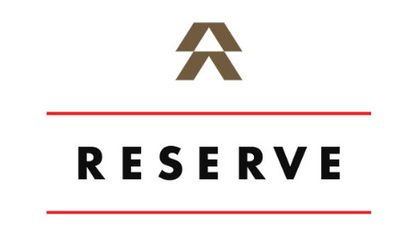Mountain Bike Wheels & Wheelsets For Sale
Shop new and used mountain bike wheels and wheelsets for sale with TPC - The Pro's Closet today. Find the best carbon or aluminum 27.5 or 29er wheels for your bike from top brands like ENVE, DT Swiss, Industry Nine, and more.
Sell Your Gear today and we can make an offer for your bike, frame, or wheelset within two business days and help you avoid the frustration and renegotiation of the secondary market.

Hold tight! We're fetching your products.
Bikes are meant
to be used.
Learn More
MTB wheels are often forgotten as a performance item, but upgraded wheels can make all the difference in your ride. With so much focus on suspension, tread patterns, and air pressure, that the things supporting the tire are overlooked. The width of the rim affects effective width of the tire, which impacts the footprint, which impacts air pressure.
Hubs have two to four bearing races in them, and how they roll impacts efficiency. The spokes, spoke dimensions, and spoke pattern affect wheel strength, which can matter not only when taking hits, but carving turns. And, of course, weight matters; lighter goes uphill better and accelerates faster, while heavier goes downhill better and holds speed more easily.
What should I know about mountain bike wheels, and how do they affect my ride?
Mountain bike wheels can impact your riding experience in multiple ways. Here's an overview of what you need to know:
- Wheel Sizes: There are three main sizes for mountain bike wheels:
- 26-inch: The original standard, now less common but still found on some bikes such as dirt jumpers.
- 27.5-inch (650B): A popular "middle ground" offering a balance of agility and roll-over capability.
- 29-inch: Larger wheels that offer better roll-over capability and momentum.
- Mullet (27.5 / 29): While not a new concept, these bikes feature a 27.5 rear wheel and 29 front. This offers a great balance between railing corners, mobility, and charging hard.
- Rim Materials:
- Aluminum: More affordable, generally durable, and offers a compliant ride.
- Carbon fiber: Lighter and stiffer, but more expensive. Carbon rims hold their true much longer due to carbon fiber's durable characteristics.
- Rim Width: Wider rims are becoming more popular as they provide better support for wider tires. Internal rim widths typically range from about 28mm to 35mm or more. Wider rims allow for lower tire pressures, increasing traction and comfort.
- Hub Types:
- Quick Release (QR): Less common now but still found on some entry-level bikes.
- Thru-axle: Stiffer and more secure, now the standard on most mountain bikes.
- Boost spacing (110mm front, 148mm rear) is common, offering increased wheel stiffness and tire clearance.
- Spoke Count: More spokes generally mean a stronger wheel, but at a slight weight penalty. XC wheels might have 24-28 spokes, while enduro or downhill wheels often have 32 or more.
- Tubeless Ready: Most modern mountain bike wheels are tubeless-ready, allowing you to run tires without inner tubes. This enables lower tire pressures for better traction and fewer punctures.
- Engagement Speed: This refers to how quickly the rear hub engages when you start pedaling. Faster engagement (measured in degrees) can be beneficial for technical climbing and quick acceleration.
- Weight: Lighter wheels accelerate faster and climb easier, but may sacrifice some durability. The type of riding you do will determine the ideal weight-to-strength ratio for your wheels.
How Wheels Affect Your Ride:
- Wheel size impacts how your bike handles obstacles and corners.
- Rim width affects tire shape and therefore traction and handling.
- Wheel weight influences acceleration and climbing ability.
- Hub engagement speed affects responsiveness when pedaling.
- Overall wheel strength and stiffness impact how the bike tracks through rough terrain.
What are the pros and cons of tubeless mountain bike wheels, is it worth switching?
Tubeless wheel setups have become more and more popular in mountain biking, and for good reason.
What is a tubeless setup? A tubeless setup eliminates the need for an inner tube. Instead, the tire and rim create an airtight seal, and the tire is filled with a sealant that helps prevent and seal small punctures.
Pros of tubeless wheels:
- Fewer punctures: The sealant inside the tire can quickly seal small punctures, reducing the chance of flats.
- Lower tire pressures: Without the risk of pinch flats, you can run lower tire pressures for better traction and a smoother ride.
- Better handling: Lower pressures and the elimination of tube movement can lead to better tire performance, especially in corners.
- Weight savings: Without the need for rubber inner tubes, tubeless wheels are much lighter.
Cons of tubeless wheels:
- Setup: Getting tires to seat properly can sometimes be challenging and might require special tools.
- Maintenance: You need to top up sealant periodically (usually every 3-6 months).
- Mess factor: Dealing with sealant can be messy, especially if you need to remove the tire.
- Not foolproof: Large tears or cuts in the tire may still require a tube to get you home.
Is it worth switching?
For most mountain bikers, the benefits of tubeless setups outweigh the drawbacks. The improved traction, puncture resistance, and overall performance make tubeless a great choice for trail, enduro, and even cross-country riding. However, if you rarely get flats and are happy with your current setup, the switch might not be necessary.
Carbon MTB Wheels

Thanks to rotor disc braking, mountain bike rims got shorter sidewalls. With the short sidewalls, rims got stronger in general, making it much easier for carbon mountain bike wheels to become practical. Shorter walls = less unsupported weight, which generally leads to stronger sidewalls, lighter rims. This has helped make carbon-rimmed wheels more popular—lighter is only a benefit when you know that the rim is likely to finish the ride.
Reynolds MTB wheels were among the first to embrace carbon for the dirty discipline, and their experience shows. ENVE came late with their MTB wheels, but their innovative thinking helped them leap into the lead group.
Still the best mountain bike wheels are the ones you’re happiest riding. Carbon is great, but if they seem too spendy or if you expect to break stuff, aluminum mtb wheels are nearly as impressive and don’t lead to tears. DT Swiss, like several companies, offers practically identically spec’ed wheels in both carbon-fiber and aluminum, so it is easy to make direct comparisons when trying to determine the price-benefit analysis of carbon vs. aluminum.
29er Wheelsets
29er wheels seem big, but they’re actually just wide 700c, and have been around since the earliest days of mtb. They roll better, have gotten stronger and lighter, and are the xc preferred choice.
27.5” Wheels
The 27.5” size, or 650b if you’re old-school, sits halfway between 26” and 29”. Therein lies the charm. Better-rolling than 26”, stronger than 29”, they make geometry easier for smaller folks as well as for bikes with long travel. Race Face, like Bontrager, and many others, offers 27.5” wheels in both aluminum and carbon versions so you can weigh the differences.
Visit us at our Louisville, Colorado Bike Store to see our full MTB wheelset collection in person.






